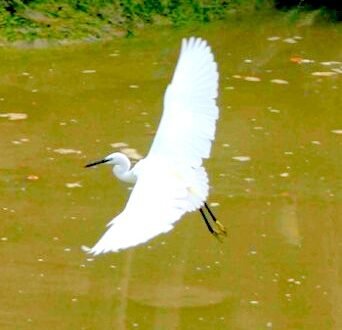
Kuala Gandah Elephant Sanctuary
Remaining forests and connecting habitat corridors became fragmented and unsustainable for free ranging elephant herds. Wild elephants inevitably encroached into cultivated areas and plantations, searching for food. The elephant liked what it found and soon developed a huge appetite for succulent young, oil palm shoots. Subsequent extensive crop damage resulted, pitting planters and their commercial interests against Malaysia’s largest mammal and its survival.
Site Ranger – Kuala Gandah Elephant Sanctuary
Kuala Gandah – Lanchang, 28500 Pahang
Tel: 011 334 576
Department of Wildlife and National Parks (DWNP)
Tel: 03 9075 2872 – Fax: 03 9075 2873
GETTING THERE
On the southern reaches of the Krau Wildlife Reserve, about 120 km north east of Kuala Lumpur via Karak Highway and the town of Lanching.there is a small road heading north, just before a BP station then left at the next intersection. From this point on just head due north and there are enough signposts to guide you. It’s About 2 hours drive from Kuala Lumpur.
THE PARK AT A GLANCE
Facilities: Visitor centre, elephant enclosures.
Accommodation: None at site.
Attractions: Close observation and handling of Asian elephants.
Permits: No permits required. Entry arranged through Department of Wildlife and National Park.
Early efforts to chase the elephants back into the remaining forest cover failed, due to the animal’s strong territorial instincts and determination not to accept the passive surrender of its ancestral home range. The elephant’s bulk and determination, however, was no protection against the bullets, poisonous baits, and wire snares used by its adversary. Consequently, elephant numbers throughout West Malaysia were mercilessly reduced during the early years of the 20th century. By 1972, wild elephant populations in West Malaysia had fallen to about 500 individuals. Recognizing the elephant’s plight, wildlife authorities worked to find a solution that would protect the elephant herds and the commercially important agricultural crops.
The use of powerful electric fences charged with 5,000 volts that pulse through three strands of heavy gauge wire proved an effective deterrent. More than 1,000 kilometres of these fences have been erected around vulnerable areas of young palm oil plants, throughout West Malaysia. When the plants are about 5 years old and they become unpalatable to elephants, the fences are moved to other locations.
In 1974, the Department of Wildlife and National Parks (DWNP) introduced its most effective, and costly, control method, the elephant capture and translocation program. In 1985, the DWNP established its Elephant Management Sanctuary at Kuala Gandah, in Pahang, as a permanent base for the elephant capture unit.
The 24 member unit of highly trained wildlife rangers specialises in the dangerous and difficult task of capturing, subduing and translocating problem elephants from trouble spots throughout West Malaysia, to sustainable habitats in other parts of the peninsula. The centre has six trained adult elephants and two young ones. The trained animals help to guide captured elephants out of the forest to waiting translocation transports.
At the sanctuary, the DW4P has established a visitor information centre based on elephant conservation. Visitors can participate in daily activities, like feeding and grooming the centre’s elephants and helping with the daily bathing of each animal in the nearby river.
Each morning rangers collect the fibrous stems of wild banana plants from the surrounding forests to feed the elephants twice each day. The elephant’s diet is also supplemented with vitamin and mineral pellets. Laws in Malaysia protect the Asian Elephant as an endangered species. And the dedicated efforts of the DWNP’s elephant management unit has successfully secured the immediate future of the remaining wild herds in West Malaysia.
Elephant numbers are increasing, and provided wildlife authorities are able to continue their conservation efforts as part of an ongoing program, there is every reason to be optimistic about the future of wild elephant populations in Malaysia.
Visit My Elephant to suport this sanctuary.
[tab]
[/tab]








